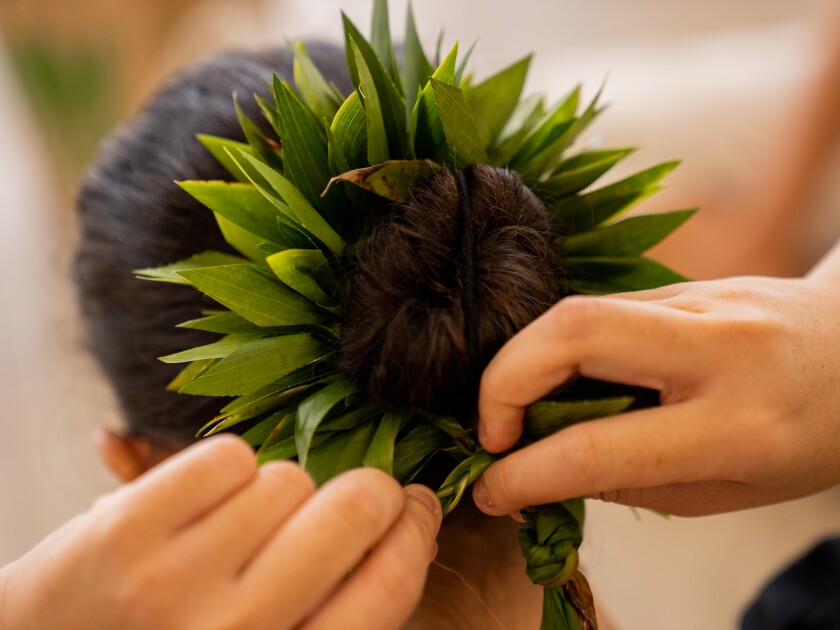BYUH alumna explains how to create three types of leis

Pilialoha Haverly, an alumna from Hauula, Oahu, who studied secondary education, explained when creating leis, “You took from the land so you’re gonna give back to the land. Traditionally you don’t throw away your lei, but you give it back to the ‘aina.”
“You have to have the right na’au when you make a lei. The right heart, the right spirit. You can’t be angry or grumpy or not want to make it. If you do, the lei is not going to turn out very well.”
Prep work
• Collect ti leaves.
• Clean the ti leaves - if you don’t, you can get sick from wearing it.
• Soften the ti leaves by microwaving them for about 15 seconds.
• Cut some of the ti leaves into sections with pointed tips.

Ti Leaf lei – Maile style
The ends of the lei should reach mid-thigh:
• Cut along the spine of the ti leaf, giving you two sections.
• Twist the ti leaf section.
• Using your big toe as an anchor, twist the ti leaf so it is rope- like. Then cross the two sections over each other. Twist, cross, twist, cross.
• Add the smaller ti leaf sections into the twists.
• Add a small leaf, twist, add leaf, twist. Continue until finished.
• When the leaf starts to get short, add another ti leaf and twist it into the rope to add length.

Haku lei
These can be worn around the head, ankle or wrists:
• Snap the spine of the leaf and pull the spine out.
• Cut off half of the leaf.
• Repeat the first two steps for three leaves.
• Tie the stems of the leaves together.
• Pinching the ends between your toes, braid the three leaves.
• Add a small ti leaf into the middle section of the braid at every cross-over.
• Continue braiding to desired length, then tie the ends together.

Plumeria lei
The lei should lay mid-chest in the front and blades in the back:
• Using biodegradable string and a lei needle, thread plumeria flowers and pull them down the string.
• Continue to desired length.
• Tie string together, making sure there aren’t any gaps between the flowers.

